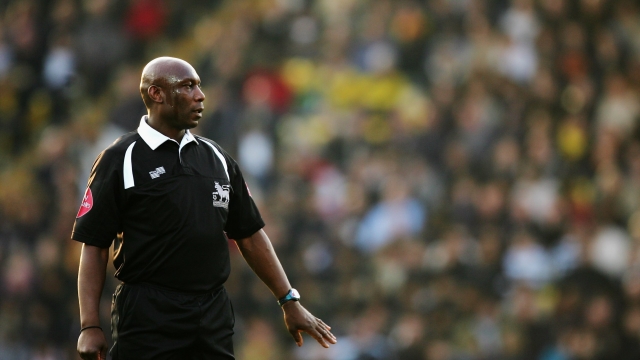by Tony Attwood
 This is the third in our series reviewing what is happening to refereeing in the Premier League. The previous articles are:
This is the third in our series reviewing what is happening to refereeing in the Premier League. The previous articles are:
Revealed: How clubs have evolved their “referee handling” tactics with such success
How the impression refs have of certain clubs influences how they are treated
You might recall that back in 2015, when we first started looking at the issue of refereeing in the Premier League in depth, we suggested there had evolved a three tier approach to football corruption.
Type 1 Match Fixing: Bribe the referee so that team A wins. This is straightforward and can become very obvious. Every time Referee X oversees Team A they win with some very dubious decisions.
Type 2 Match Fixing: Bribe the referee so that team B loses. It is slightly less obvious because it is easier to fix it so that one team loses (for example by sending off a player) than to fix it so a team wins (which involves helping them score a goal). But it can still be spotted fairly easily
Type 3 Match Fixing: Bribe the referee so that when he is refereeing any match involving any of team A’s close rivals, he gives certain decisions that will turn a result from these rivals from a draw to a loss or a win to a draw.
So if Manchester City (to take one team at random) wanted to ensure they were likely to win the league and they saw Liverpool (again taken at random) as their major rivals, they would bribe referees to turn a Liverpool victory into a draw, and a draw into a defeat. Obviously if Liverpool take a 3-0 lead there is nothing to be done, and the game proceeds normally. But if Liverpool are 1-0 up and the ref has the chance he might give a dubious penalty to the opposition. Likewise if one of the teams that could overtake Liverpool at the top is playing, the referee might help them along, thus meaning the match fixing is happening even if Liverpool are not playing.
This “Type 3 match fixing” which we explored in depth in the past, is almost impossible to spot unless refereeing is open to inspection by all, (which of course can’t happen under PGMO rules since the referees’ association inspects the referees – there is no external monitoring).
These problems that we highlighted earlier, still exist. But now we have more: the bias of referees discovered in the LSE research, the curious protocols discovered when Mr Wenger was charged by PGMO, the PGMO decision to keep the number of referees very limited and use the same referees over and over again in relation to certain teams, the unwillingness of the media to touch the issue, the bias and inaccuracies in refereeing that we found in the 160 game analysis, the ultra secrecy of the PGMO… the list goes on and on.
Pulled together, all this data reported in depth on Untold across the years has led to the suggestion that there is another type of match fixing. More insidious, more difficult to spot, but ultimately incredibly effective.
Type 4 Match Fixing: Building an image for the referee
If Untold can spot curious statistical anomalies by the analysis of tackles, fouls and yellow cards with the aid of a calculator and readily available data, (see for example here) just think what a Premier League club could do with all the software, manpower and finance at its disposal.
Basically any club interested can look at the sort of figures we have pulled together in the above example, and indeed pull in other data through the use of much more sophisticated computer technology. They can also talk to friendly journalists about the sort of image they are looking to promote, and ensure their message gets across – a message such as “Team X don’t foul; they tackle a lot but they don’t foul…”
With suitable rewards, journalists are encouraged to run such stories, and the word in football reflects the projected image. Team X don’t foul. The number of fouls called slowly goes down a little, the number of yellow cards goes down because refs are calling fewer fouls. There is nothing unusual here, as multiple psychological research studies show we are all influenced by the messages around us.
(Curiously most of us stick by the belief that while other people might be influenced by signals around them, they are not. Indeed, since I write advertisements for a living I see this every day. Many of my clients booking in advertisements seriously tell me that they are not influenced by adverts, although the people who buy their product are. And that’s how most of us see the world. If you would like to read a little more about influence of this type see here.)
Meanwhile with clubs monitoring every aspect of their players’ behaviour, and of the behaviour of the opposition, it would actually be amazing if they were not also monitoring referee behaviour. The clubs’ aim is to get fewer yellow cards per foul (since yellow cards obviously inhibit subsequent player behaviour as the player wants to avoid being sent off) and/or they aim to get more penalties.
In the next article I’ll look at exactly how they do it. “How the clubs do Type 4 match fixing” is up next.
- How clubs manipulate referees through their tactics
- Proving unconscious bias by referees is rife in the Premier League: penalties
- Revealed: How clubs have evolved their “referee handling” tactics with such success
- How the impression refs have of certain clubs influences how they are treated
